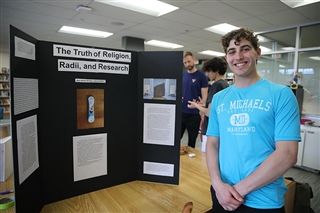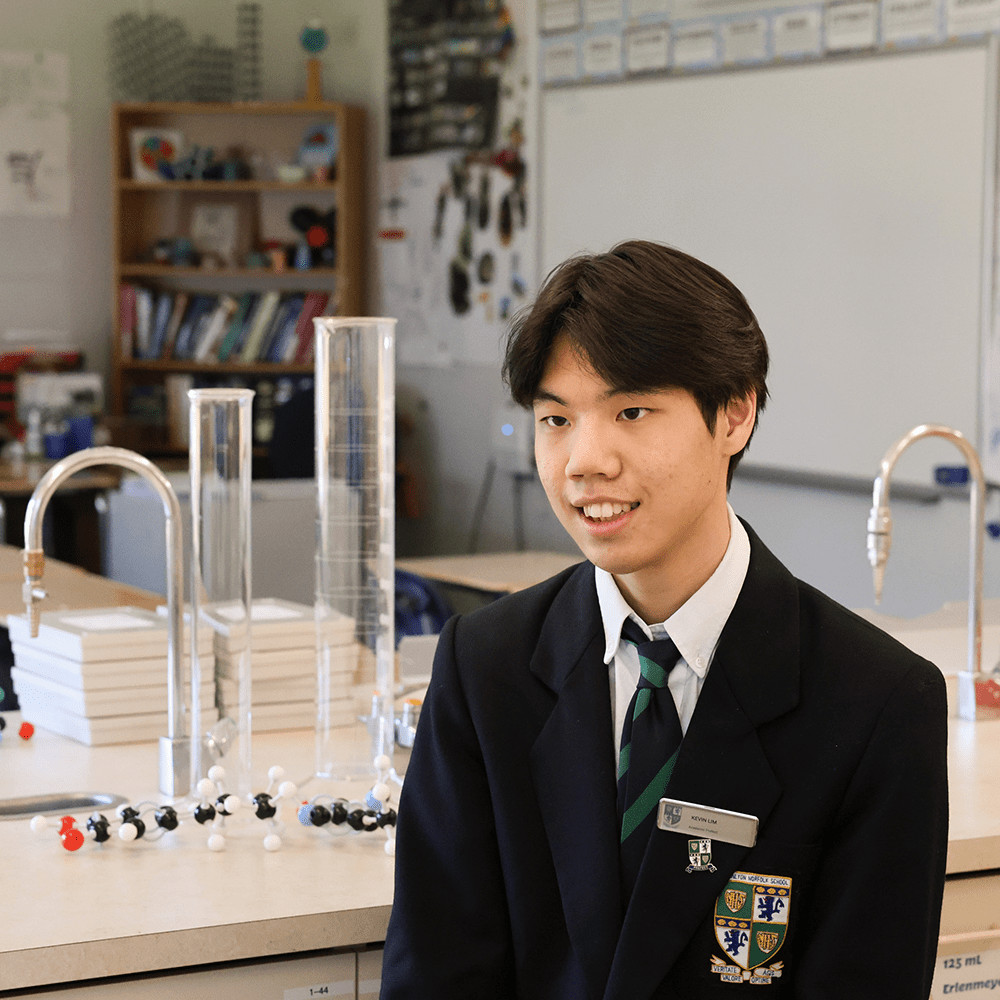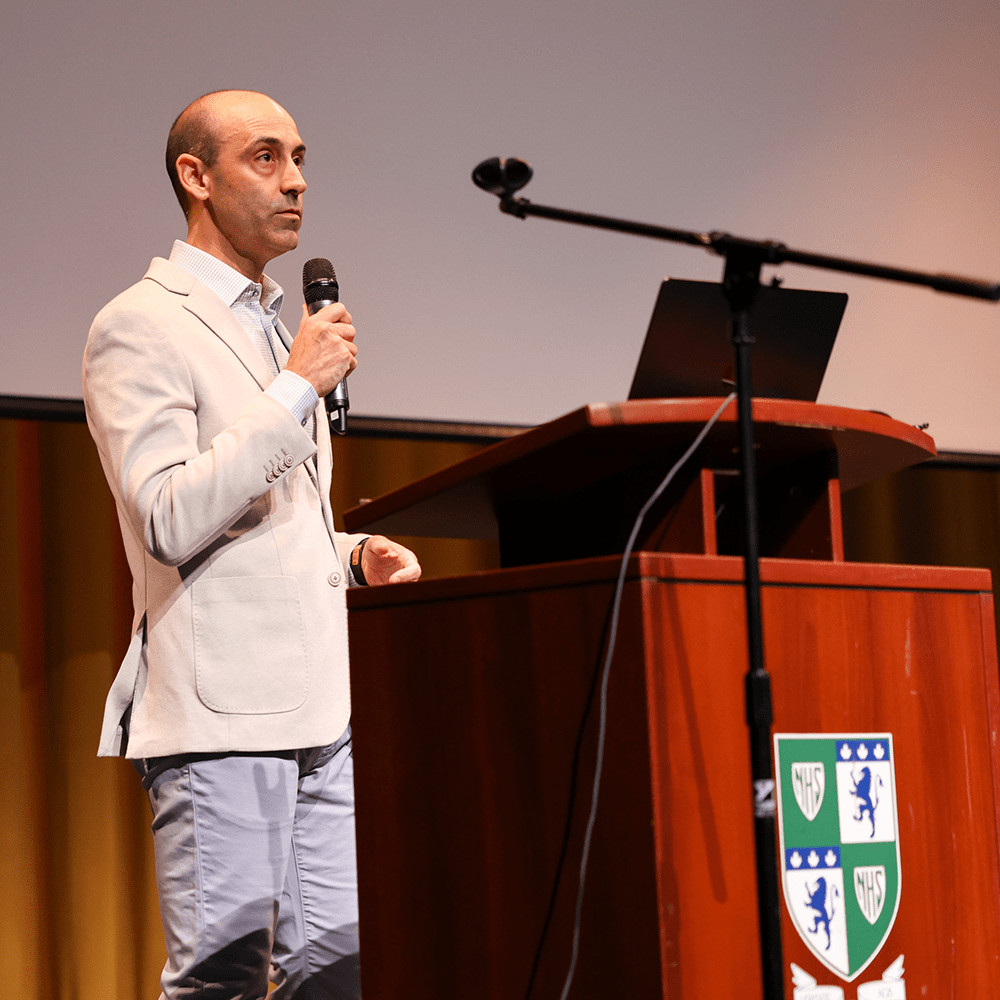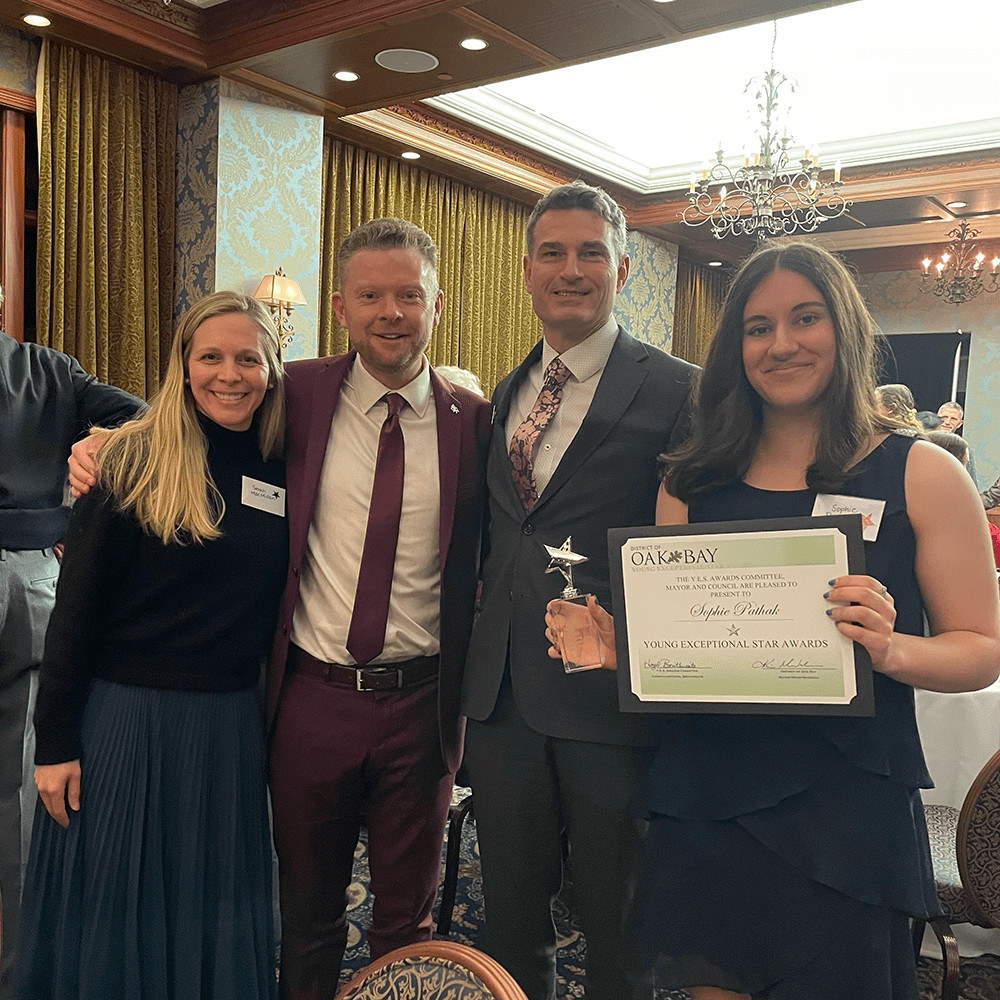Grade 11 IB Theory of Knowledge (ToK) students recently had the opportunity to present and discuss their cumulative projects with their peers and teachers. As an assessment at the end of their Grade 11 year, students have a chance to pick a knowledge question from a list of prompts. When they explore the question, they pick three examples or objects from their world that illustrate different aspects of that question. Students then prepare an approximately 300-word write-up on each example or object.
Seth Feldhuhn ‘23 chose the prompt “Are some things unknowable.” He said he wanted to dive deep into the things the world hasn’t found an answer to. As his three objects, Seth used some digits of pi, religion and the Rosetta Stone.
“In short, you don’t know how pi ends, but you always use pi in math and life,” he explained. “We don’t know much about faith, and how everything starts—also different religions believe different things, so it’s really hard to have a definite answer on faith and religion. With the Rosetta Stone, it’s really important that we are able to connect the past and ancient civilizations, as we can do with the Egyptian hieroglyphs. Without them we would have lost contact with ancient civilizations. So, it’s important to have those symbols written down.”
Seth said he enjoyed getting to dig deep into his question and spending time on all the research required to complete his project.
“It was really fun, and a lot of work,” he said. “Ms. Easton, really helped me hone in on different aspects of each of the three objects I chose. Overall, I enjoyed it and feel pretty good about it.”
Eva Grand ’23 picked the prompt “Are some types of knowledge less open to interpretation than others?” because she wanted to look at how things can be seen differently by others and how things are universal.
“My example of something that wasn’t open to interpretation was the quadratic formula as it represents knowledge of mathematics, which is usually something that you don’t think is open to interpretation because when you get answers it’s either right or wrong. You can’t say it’s somewhat right,” she described. “However, I did see that there could be some interpretation because when you look at the quadratic formula, we have been taught to interpret the letters to mean things and represent certain values.”
She also chose to use a viral dress illusion that was popular online in 2015. It caused a lot of debate on social media as people saw the dress as either white and gold or blue and black.
“This is due to sense perception and our knowledge and how some people’s eyes discount either the blue to see white and gold, or the gold to see blue and black,” she said. “The final object I chose was this poem we are studying in my English class called ‘Equality’ by Maya Angelou, and it’s an example of something open to a wide range of interpretations. It all depends on your background, past experiences you’ve had and the context the poem is read in because it’s a type of subjective knowledge so all these other things in your life can affect how you are going to interpret a piece of literature that you read.”
“I enjoyed doing the project because I learned a lot of interesting information and it was cool. I’ve never done any project like this where you choose a prompt—and it’s such a broad topic where you can choose anything you want to represent it.”





